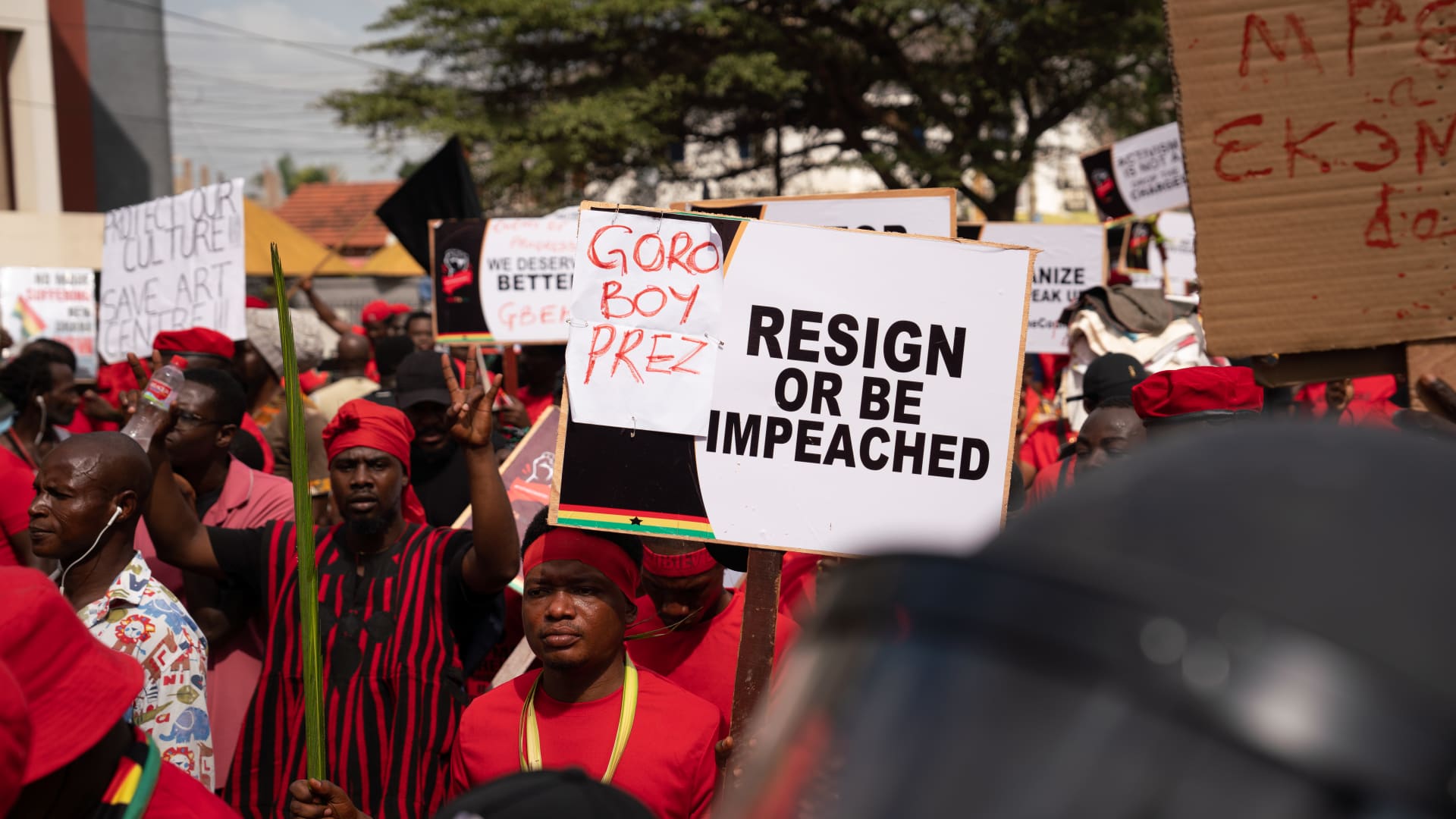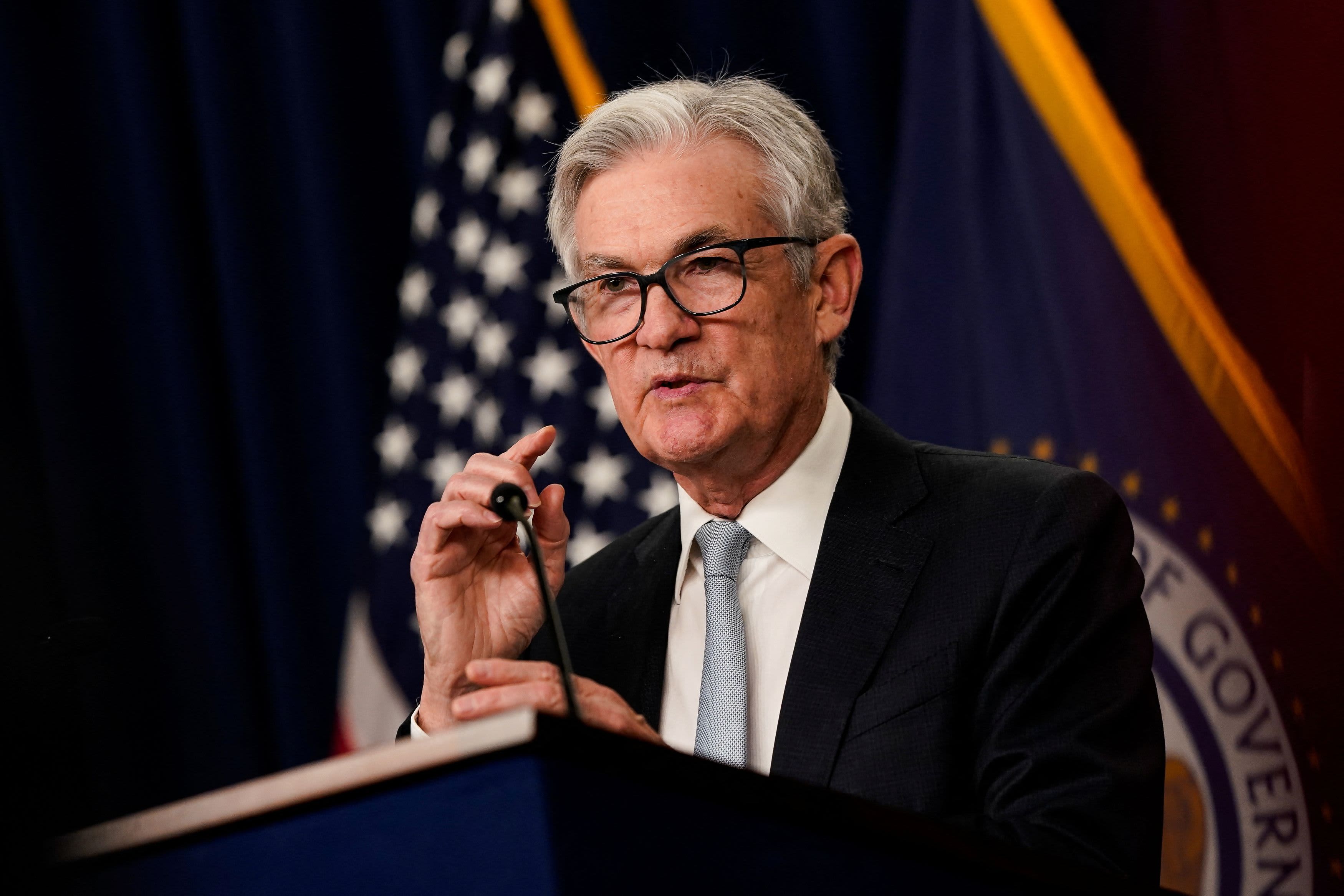The U.S. Federal Reserve‘s monetary policy tightening and a strengthening dollar are having a knock-on effect on African nations’ balance sheets and public debt burdens, according to a new report.
In early November, the Fed implemented a fourth consecutive three-quarter point interest rate increase to take its short-term borrowing rate to its highest level since January 2008.
related investing news
Meanwhile, a combination of rate hikes, the war in Ukraine and fears of recession have driven the traditional “safe haven” greenback higher. Despite a recent tail-off since its peak in late September, the DXY U.S. dollar index is up more than 11% year-to-date.
Government debt in sub-Saharan Africa has risen to its highest level in more than a decade as a result of the Covid-19 pandemic and Russia’s invasion of Ukraine. In a report Tuesday, risk consultancy Verisk Maplecroft highlighted that debt is now 77% of gross domestic product on average across six key African economies: Nigeria, Ghana, Ethiopia, Kenya, Zambia and Mozambique.
These nations have added a median of 10.3 GDP percentage points to this debt burden since 2019, the report noted.
As the supply chain disruptions provoked by the post-pandemic surge in demand and the Ukraine war have driven central banks to raise interest rates, the increase in sovereign debt yields has further constrained African balance sheets.
“Consecutive base rate rises by the U.S. Federal Reserve have resulted in reduced capital inflows into Africa and widened spreads on the continent’s sovereign bonds,” said Verisk Maplecroft Africa Analyst Benjamin Hunter.
“Exposure to international interest rate changes is exacerbated by the large proportion of African public debt that is held in dollars.”
The ability of African governments to service their external debt will continue to be weakened by scarcer financing and higher interest rates, Verisk Maplecroft said, while domestic rate rises in response to soaring inflation are also intensifying the overall public debt burden of many sub-Saharan African countries.
“High public debt levels and elevated borrowing costs will constrain public spending, which will likely result in a deteriorating ESG and political risk landscape across the continent,” Hunter added.
“Weaker sovereign fundamentals and higher ESG+P risks will in turn deter investors, further weakening Africa’s market position.”
Verisk Maplecroft expects the Fed’s hawkish stance to take its base rate from 3.75% in November to between 4.25% and 5% in 2023, prolonging the downward pressure on African sovereign debt markets.
The firm does not foresee a substantial loosening of Africa’s domestic monetary conditions over the next 12 months either, which Hunter said will keep borrowing costs high and “disincentivise inflows into African sovereign debt markets.”
Spotlight on Ghana
Hunter pointed to Ghana as among the most affected by this negative feedback loop between a deepening public debt burden, a constrained fiscal position and a deteriorating ESG and political landscape.
The West African nation’s public debt has risen from 62.6% of GDP in 2019 to an estimated 90.7% in 2022, while inflation soared to 40.4% in October and the central bank on Monday raised interest rates by 250 basis points to 27%. The Bank of Ghana has now hiked by 1,350 basis points since the tightening cycle began in 2021.
With the cedi currency — one of the worst performers in the world this year — continuing to lose value and inflation continuing to rise, however, analysts at Oxford Economics Africa projected this week that the main interest rate will likely be hiked by another 200 basis points early in 2023.
“With living standards deteriorating as a result, civil unrest and government stability risks have worsened. In November 2022, demonstrators in Accra called for the resignation of President Nana Akufo-Addo,” Hunter said.
“In turn, this instability will widen spreads on Ghana’s sovereign debt, deepening the negative feedback loop by increasing external borrowing costs; our research indicates that weaker performers on the Governance pillar of our Sovereign ESG ratings have to contend with 25% higher yields on average.”
The IMF will visit Ghana again in December to continue discussions on the country’s request for a debt restructuring plan. Meanwhile, Moody’s on Tuesday downgraded the country’s credit rating even deeper into “junk” territory, citing the likelihood that private investors rack up steep losses as a result of the restructuring.
The IMF is currently providing or discussing debt relief with 34 African nations, including through the G-20 Common Framework established during the Covid-19 pandemic. Verisk Maplecroft notes that while IMF assistance will help shrink fiscal deficits and restructure debts, countries implored by the IMF to cut spending will likely experience “negative ESG+P trade-offs.”
“Although the IMF has emphasised that targeted social spending on the most vulnerable must not be cut, social spending on programmes such as food and fuel subsidies will likely be scaled back,” Hunter said.
“The inability to mitigate the impact of external economic shocks and inflation through public spending will likely have reverberating impacts across the continent’s ESG+P risk landscape.”



 This “NEW CONCEPT” Trading Strategy Prints Money!… (INSANE Results!)
This “NEW CONCEPT” Trading Strategy Prints Money!… (INSANE Results!)
